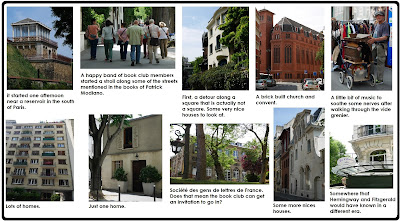We were six in attendance: Maren, Caroline, Catherine, Clare, Cynthia, and we welcomed new joiner, Brianna, who definitely helped to move the discussion along, and who has finally interjected a new name that does not begin with either M or C. We met at the Indian restaurant Kashmir House, in the 10th, and I believe it received 6 thumbs up. Several tables full at all times, despite the holiday season, food reasonably priced, attentive service. Embarrassing level of drama created by our lengthy goodbye and the arithmetical hurdles posed by 6 methods of payment. But a smiling, cooperative staff throughout the ordeal. And yes, I think we all enjoyed the food, too.
And, yes, we managed to discuss the book. Overall most appreciated at least the lovely writing, but we did agree that it was surprising for it to have been selected for a Booker Prize. We admired the way she was able to describe the inner lives of children, and how neglect and abuse can impact the way children perceive the world and develop mechanisms to cope. Although she did appreciate the writing, Catherine confessed that the book was a bit too depressing to finish, and that she did not learn anything new from it, especially in light of the slew of books set in India in the same period of time. Brianna did not believe that it was necessary to learn from a book to enjoy it. Clare wanted it to be known that she did like the book, although she thought it would have been better had she not known the ending at the start. She used Love in the Time of Cholera as an example of why it is nice not to know the ending in advance. Cynthia basically thought there was no problem with any scenario (depressing/knowing the end at the start/not learning anything) as long as the writing was beautiful and the characters interesting. She also acknowledged that depending on one’s mindset at a certain moment in life, some books just click, and others don’t. We can start a book at one moment and not be able to continue, yet pick it up months or years later and love it.
The God of Small Things is indeed the only novel written by Arundhati Roy, but she has kept writing essays on politics and other subjects. Caroline enjoyed the book but thought it overrated. She also brought along a humorous article from The Guardian which poked fun at the writing style. Apparently there was very strong reaction on both sides when the book won the Booker, and its merits continue to be debated even now.
As for the characters, we agreed on the following:
Ammu – most well-developed, best-designed character. Most human and well-rounded/multi-faceted.
Chacko – stereotypical male taken in charge by women. We debated whether there were any male characters in the book who aren’t entirely either “bad guys” or victims. He was the only one that was not 100% one or the other, and we did not fault him in the end for being a stereotype, because in a way neither he nor the women around him had a choice in the matter. He lived in two worlds at once (Oxford vs India) and at times transposed the values of one world into the other while at other times failed to do so. (e.g., protecting Mamachi from his father but remaining a terrible macho nonetheless with manly needs and driving the family business into ruins.)
Velutha – baptized Christian and is clearly a victim on many levels (victim of other people’s malicious behavior, as well as an example of society’s unjustness.) We never quite managed to discuss whether his Christianity was “inherited,” as his baptism was done by his father, and we did fail to explicitly discuss the impact of what is inherited, and what is not.
Rahel/Estha – Rahel was recognized as a storyteller, more imaginative and resilient than her brother. Estha was recognized as another victim, both at the hands of the molester as well as Baby. We did not quite find a lot of ambiguity in the characters (except maybe Ammu). Their relationship was extraordinary and culminated in the act of incest at the end of the book which was not 100% clear to have taken place (but perhaps 99% clearly took place?).
Baby – quite simple to agree on this character: just awful how she wrongly accused Velutha AND then manipulated the children to implicate him. Her suffering due to unrequited love did not generate a lot of sympathy for her in the end.
We arrived at the discussion of whether or not people can ever really change, and whether people can ever really have a drastic, life-altering change. We ultimately agreed that actually yes, it is possible to have an experience that can impact you suddenly and severely. Maren also noted that while we discussed the setting in India, the vegetarian kitchen, and the communist activities in the region, we did not discuss India itself very much. We did, however, agree that yes, the small things in your life can have an enormous impact.
Cynthia & Maren
